Related Research Articles

Bangladesh, officially the People's Republic of Bangladesh, is a country in South Asia. It is the eighth-most-populous country in the world, with a population of around 169 million people in an area of 148,460 square kilometres (57,320 sq mi). Bangladesh is among the most densely populated countries in the world, and shares land borders with India to the west, north, and east, and Myanmar to the southeast; to the south it has a coastline along the Bay of Bengal. It is narrowly separated from Bhutan and Nepal by the Siliguri Corridor; and from China by the Indian state of Sikkim in the north. Dhaka, the capital and largest city, is the nation's political, financial and cultural centre. Chittagong, the second-largest city, is the busiest port on the Bay of Bengal. The official language is Bengali, one of the easternmost branches of the Indo-European language family.

The University of Rajshahi, also known as Rajshahi University or RU, is a public research university located in Motihar, Rajshahi, Bangladesh. It is the second oldest university in Bangladesh. The university's sixty departments are organized into ten faculties.

Noakhali, historically known as Bhulua, is a district in southeastern Bangladesh, located in the Chittagong Division. It was established as district in 1821, and officially named Noakhali in 1868. Its headquarters lie in the town of Maijdee, making Noakhali the only district of Bangladesh that isn't named after its town name.
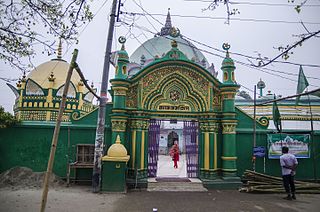
Sirajganj District is a district in the North Bengal region of Bangladesh, located in the Rajshahi Division. It is an economically important district of Bangladesh. Sirajganj district is the 25th largest district by area and 9th largest district by population in Bangladesh. It is known as the gateway to North Bengal.
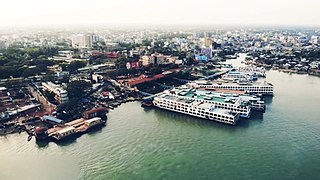
Barisal, officially known as Barishal, is a major city that lies on the banks of the Kirtankhola river in south-central Bangladesh. It is the largest city and the administrative headquarter of both Barisal District and Barisal Division. It is one of the oldest municipalities and river ports of the country. The city was once called the Venice of the East or the Venice of Bengal.
Syed Ali Ahsan was a Bangladeshi poet, writer and university academic. He was awarded Ekushey Padak (1982) and Independence Day Award (1987) by the Government of Bangladesh. In 1987, he was selected as the National Professor of Bangladesh. He was credited as the official English translator of the National Anthem of Bangladesh.
Jail Killing Day is observed by the Awami League (AL) of Bangladesh and many other political organisations on 3 November every year. It commemorates the killing of four Awami League and national leaders: former Vice-President Syed Nazrul Islam, former Prime Minister of Bangladesh Tajuddin Ahmed and Captain (Rtd.) Mansur Ali, and former Home Minister A H M Quamruzzaman on this date in 1975.
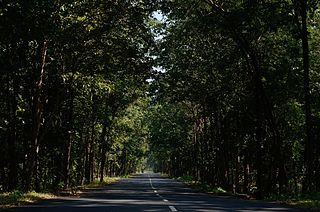
Social forestry is the management and protection of forests and afforestation of barren and deforested lands with the purpose of helping environmental, social and rural development. The term social forestry was first used in 1976 by The National Commission on Agriculture, when the government of India aimed to reduce pressure on forests by planting trees on all unused and fallow lands. It was intended as a democratic approach to forest conservation and usage, maximizing land utilization for multiple purposes.
Bhedarganj is an upazila (sub-district) of Shariatpur District in central Bangladesh, located in the Dhaka Division. It is a part of the Greater Faridpur region and is named after its administrative centre, the town of Bhedarganj.
Gosairhat is an upazila of Shariatpur District in the Division of Dhaka, in south central Bangladesh.
Shariatpur Sadar is an upazila of Shariatpur District in the Division of Dhaka, Bangladesh. Shariatpur Thana was converted into an upazila in 1984. The upazila took its name from the district and the Bengali word sadar (headquarters). It is the subdistrict where the district headquarters, Shariatpur town, is located.
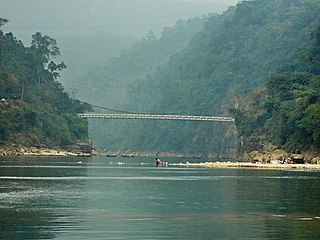
Jaflong is a hill station and tourist destination in the Division of Sylhet, Bangladesh. It is located in Gowainghat Upazila of Sylhet District and situated at the border between Bangladesh and the Indian state of Meghalaya, overshadowed by subtropical mountains and rainforests. It is known for its stone collections and is home of the Khasi tribe.

The Armenians in Bangladesh were ethnic Armenians who lived in what is now called Bangladesh. Their numbers have gradually diminished and there are now no Armenians in the country.
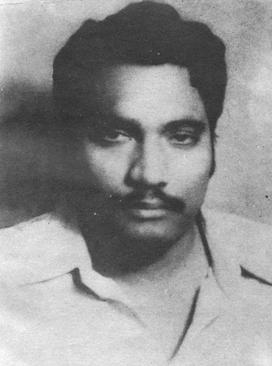
Siraj Sikder was a Bangladeshi revolutionary politician.

The Prithimpassa family, also known as the Nawabs of Longla, are an Shia royal family from the Prithimpassa Union, Kulaura Upazila, Moulvibazar, Sylhet, Bangladesh. The family was of the erstwhile feudal nobility of East Bengal. They played important roles in the Indian Rebellion of 1857, the Partition of India and Sylhet referendum in 1947, and the Bangladesh Liberation War of 1971.
Syed Nausher Ali was an Indian left-leaning politician in West and East Bengal during British rule. He was a cabinet member in the first A. K. Fazlul Huq ministry and later the Speaker of the Legislative Assembly in the second coalition Ministry. He was renowned for his advocacy of abolition of British imperialism and his support of Hindu-Muslim cooperation in the form of an undivided India.
Zajira is an upazila of Shariatpur District in the Division of Dhaka, Bangladesh. Zajira Thana was established in 1973 and was converted into an upazila in 1984. It was named after its administrative center, the town of Zajira.

The national symbols of Bangladesh consist of symbols to represent Bangladeshi traditions and ideals that reflect the different aspects of the cultural life and history. Bangladesh has several official national symbols including a historic document, a flag, an emblem, an anthem, memorial towers as well as several national heroes. There are also several other symbols including the national animal, bird, flower and tree.
Prof. Dr. Syed Ali Ashraf was a Bangladeshi-born Islamic scholar and academic. He was the Professor of English and Head of the Department of English, Karachi University, and later became Director-General, World Centre for Islamic Education at Jeddah, Saudi Arabia in 1980. He was also the founder and director-general of Islamic Academy, Cambridge. He was also the founder vice-chancellor of Darul Ihsan University from its founding to before his death in 1998 in Bangladesh.
References
- ↑ "Forest and Forestry - Banglapedia".
- ↑ "One quarter of Bangladesh is safe from recently exposed vulture-killing drug". birdlife.org. BirdLife International. Retrieved 11 April 2017.
- ↑ "The vital link between forests and energy". The Daily Star. 21 March 2017. Retrieved 11 April 2017.
- ↑ "Forest and Forestry". Banglapedia. Retrieved 11 April 2017.
- ↑ Ali, Syed Salamat. "Social Forestry". Banglapedia. Retrieved 11 April 2017.
- ↑ Khan, Mizan R. "Environment". Banglapedia. Retrieved 11 April 2017.
- ↑ Ali, Syed Salamat. "Plantation Forestry". Banglapedia. Retrieved 11 April 2017.
- ↑ "Corruption allegations proven against Shariatpur Forest Department". Dhaka Tribune. 17 March 2017. Retrieved 11 April 2017.